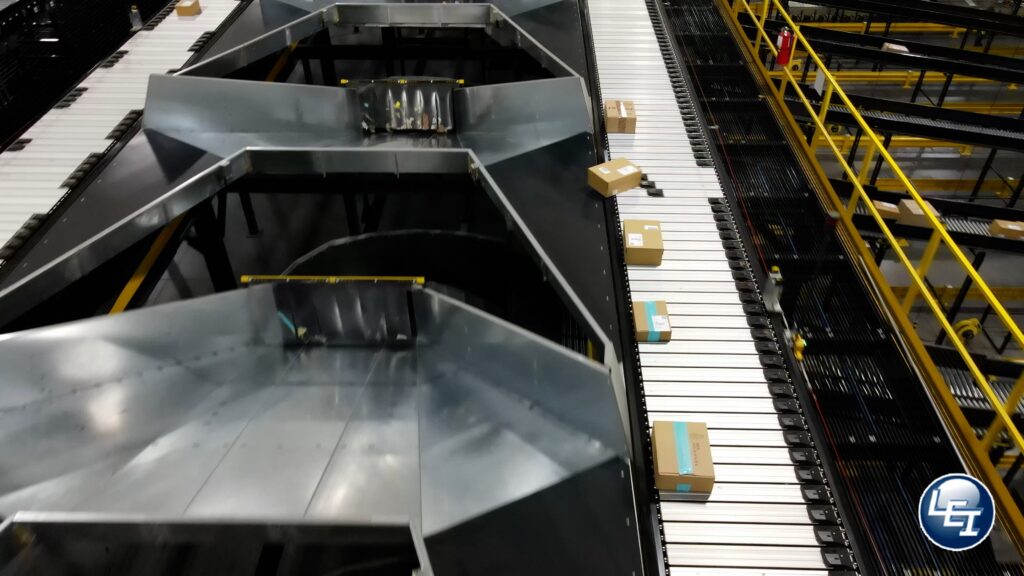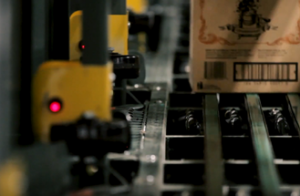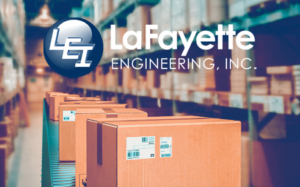Table of Contents
Conveyor retrofits are a critical aspect of modernizing and optimizing manufacturing and distribution facilities. By updating existing systems, companies can significantly enhance their operational efficiency, reduce downtime, and extend the lifespan of their equipment. Lafayette Engineering, a leader in the field, specializes in providing tailored conveyor retrofit solutions that meet the unique needs of various industries. In this blog, we’ll explore the key benefits of conveyor retrofits and how Lafayette Engineering can help your business achieve optimal performance.
1. Increased Efficiency
One of the primary reasons for retrofitting a conveyor system is to boost efficiency. Outdated systems often suffer from wear and tear, leading to frequent breakdowns and slow operation. Retrofits can replace old components with modern, high-performance parts, resulting in faster and more reliable conveyor operations. By integrating advanced technologies, such as automated controls and sensors, Lafayette Engineering ensures that your conveyor system runs smoothly and efficiently, minimizing delays and maximizing productivity.

2. Cost Savings
Retrofitting a conveyor system can be more cost-effective than investing in a brand-new system. Lafayette Engineering focuses on upgrading existing infrastructure, which reduces the need for extensive new equipment purchases. This approach not only lowers capital expenditure but also minimizes the disruption to your operations. By extending the lifespan of your current system, you can achieve substantial savings while still enjoying the benefits of modern technology.
3. Improved Safety
Safety is a paramount concern in any industrial setting. Old conveyor systems can pose significant safety risks due to outdated designs and worn-out components. Conveyor retrofits by Lafayette Engineering include the implementation of the latest safety features, such as emergency stop mechanisms, guardrails, and advanced monitoring systems. These enhancements help protect your workforce and ensure compliance with current safety regulations.
4. Enhanced Flexibility
Modern manufacturing and distribution environments require systems that can adapt to changing demands. Conveyor retrofits provide an opportunity to reconfigure and customize your conveyor layout to better align with your current operational needs. Whether it’s adding new lanes, changing the conveyor path, or integrating with other automated systems, Lafayette Engineering’s retrofit solutions offer the flexibility needed to keep your operations agile and responsive.
5. Reduced Downtime
Downtime can be costly for any business. Outdated conveyor systems are more prone to breakdowns and require frequent maintenance, leading to significant operational disruptions. By retrofitting your conveyor system, Lafayette Engineering can replace worn-out components with more durable and reliable alternatives. This reduces the frequency of breakdowns and maintenance requirements, ensuring that your production lines stay up and running with minimal interruptions.
6. Energy Efficiency
Energy consumption is a significant cost factor in industrial operations. Older conveyor systems are often less energy-efficient, leading to higher utility bills. Conveyor retrofits can include the installation of energy-efficient motors, variable frequency drives (VFDs), and other power-saving technologies. Lafayette Engineering’s expertise in energy-efficient solutions helps businesses reduce their environmental footprint and achieve cost savings through lower energy consumption.
7. Advanced Technology Integration
The rapid advancement of technology means that older conveyor systems may not be compatible with modern automation and data analytics tools. Conveyor retrofits provide an opportunity to integrate cutting-edge technologies, such as IoT sensors, real-time monitoring systems, and advanced control software. Lafayette Engineering ensures that your retrofitted conveyor system is equipped to handle the demands of Industry 4.0, enabling better data collection, analysis, and decision-making processes.
Lafayette Engineering: Your Partner in Conveyor Retrofits
Lafayette Engineering is a trusted name in the field of conveyor system retrofits. With a commitment to innovation and customer satisfaction, they offer comprehensive retrofit solutions tailored to the unique needs of each client. Here’s a brief overview of what sets Lafayette Engineering apart:
- Expertise: With years of experience in the industry, Lafayette Engineering boasts a team of skilled engineers and technicians who understand the complexities of conveyor systems and how to optimize them.
- Customized Solutions: Every business is different, and so are their conveyor system requirements. Lafayette Engineering provides customized retrofit solutions that address the specific challenges and goals of each client.
- Quality Assurance: Lafayette Engineering ensures the highest quality standards in every project, from initial assessment to final implementation. Their rigorous quality control processes guarantee that your retrofitted system will perform reliably and efficiently.
- Support and Maintenance: Beyond the retrofit process, Lafayette Engineering offers ongoing support and maintenance services to ensure your conveyor system continues to operate at peak performance.
Conclusion
Conveyor retrofits offer a host of benefits, from increased efficiency and cost savings to improved safety and advanced technology integration. By partnering with Lafayette Engineering, you can ensure that your conveyor system is upgraded to meet the demands of today’s fast-paced industrial environment. Visit Lafayette Engineering’s website to learn more about their comprehensive retrofit solutions and how they can help your business achieve optimal performance.
1. What are conveyor retrofits?
Conveyor retrofits involve upgrading and modernizing existing conveyor systems with new components and technologies to improve efficiency, safety, and performance.
2. Why should I consider retrofitting my conveyor system?
Retrofitting can significantly enhance your system’s efficiency, reduce downtime, improve safety, and lower operational costs. It also allows for the integration of advanced technologies, ensuring your system is up-to-date with the latest industry standards.
3. How does a retrofit improve efficiency?
By replacing outdated parts with high-performance components and incorporating modern technologies like automated controls and sensors, retrofits can streamline operations, reduce delays, and enhance overall productivity.
4. Are conveyor retrofits cost-effective?
Yes, retrofitting is often more cost-effective than purchasing a new system. It reduces capital expenditure by upgrading existing infrastructure and minimizes operational disruption, providing substantial cost savings.
5. How do retrofits enhance safety?
Retrofitted systems include the latest safety features, such as emergency stop mechanisms, guardrails, and advanced monitoring systems, reducing the risk of accidents and ensuring compliance with current safety regulations.
6. Can retrofits make my conveyor system more flexible?
Yes, retrofits allow for reconfiguring and customizing your conveyor layout to better suit current operational needs, adding new lanes, changing paths, or integrating with other automated systems for improved flexibility.



